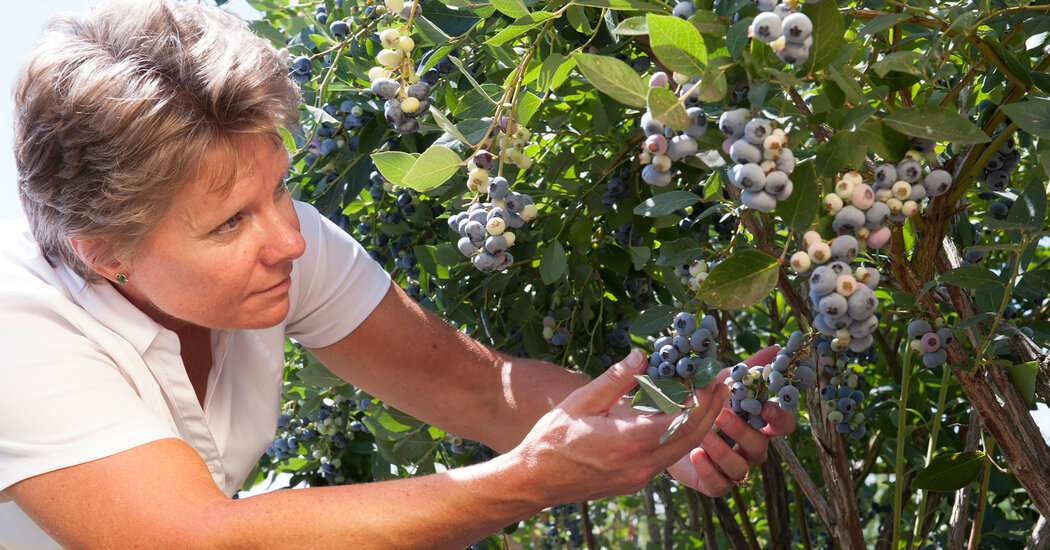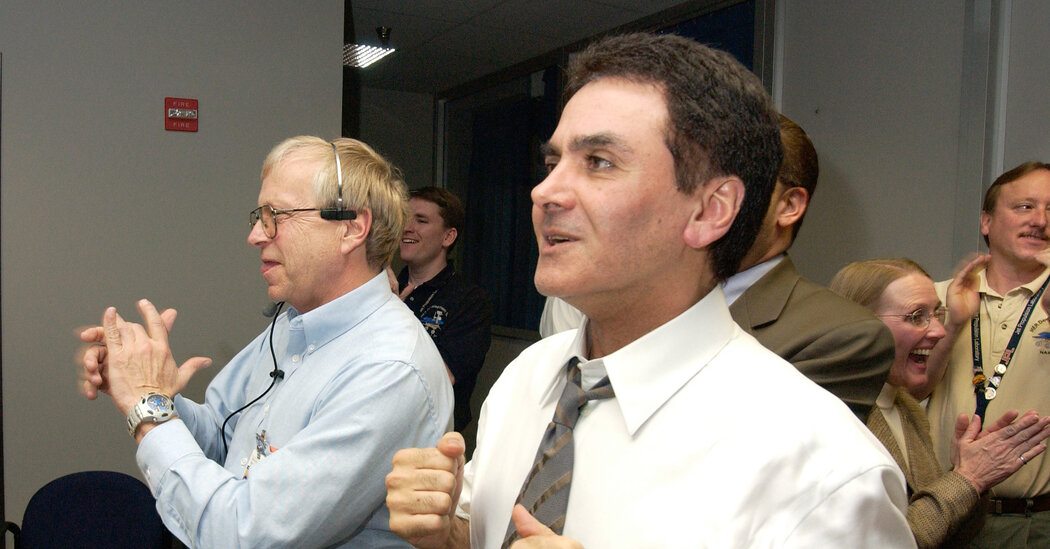Remnants of Cindy Could Redevelop, Meteorologists Say
Remnants of Cindy, the second active tropical storm to threaten the Caribbean in this past week, could redevelop, forecasters said. It was unclear if it will impact any land.
An area of low pressure, linked to remnants of Cindy, was producing disorganized showers and thunderstorms more than 400 miles south-southeast of Bermuda, the National Hurricane Center said on Tuesday.
“This is staying well offshore of the United States at this time,” Philippe Papin, a hurricane specialist at the center in Miami, said in an interview on Tuesday.
“We are monitoring it for the low chance it might be able to redevelop into a potential tropical cyclone,’’ he said. The center was giving the remnants a 10 percent chance of developing further in the next two days, and a 30 percent chance of formation in the next seven days.
Mr. Papin described Cindy as “a very small tropical cyclone. It didn’t have a large amount of waves and significant swells with it.”
He added that the impacts from the remnants’ “swells would be very minimal.”
Forecasters said that strong upper-level winds were expected to prevent redevelopment over the next couple of days, but conditions could become conducive for some “gradual development” by the end of the week.
The system will move northward over the western Atlantic and pass near Bermuda on Thursday.
Cindy, the third named storm of this year’s Atlantic hurricane season, took shape last Friday, but it began to fade within days.
By Sunday night, the storm’s remnants had weakened to an open wave, the center said in its final advisory on the storm.
Cindy was trailing Tropical Storm Bret, which dissipated on Saturday after causing damage in St. Vincent and the Grenadines last week.
Tropical disturbances that have sustained winds of 39 m.p.h. earn a name. Once winds reach 74 m.p.h., a storm becomes a hurricane, and at 111 m.p.h. it becomes a major hurricane.
Cindy is actually the fourth tropical cyclone to reach tropical storm strength this year.
Mr. Papin added that it is not usual for a tropical storm to degenerate and later redevelop.
“That does happen from time to time’’ in a hurricane season, he said.
The Hurricane Center announced in May that it had reassessed a storm that formed off the Northeastern United States in mid-January and determined that it was a subtropical storm, making it the Atlantic’s first cyclone of the year.
However, the storm was not retroactively given a name, making Arlene, which formed in the Gulf of Mexico on June 2, the first named storm in the Atlantic basin this year.
The Atlantic hurricane season started on June 1 and runs through Nov. 30.
In late May, the National Oceanic and Atmospheric Administration predicted that there would be 12 to 17 named storms this year, a “near-normal” amount. There were 14 named storms last year, after two extremely busy Atlantic hurricane seasons in which forecasters ran out of names and had to resort to backup lists. (A record 30 named storms took place in 2020.)
However, NOAA did not express a great deal of certainty in its forecast this year, saying there was a 40 percent chance of a near-normal season, a 30 percent chance of an above-normal season and another 30 percent chance of a below-normal season.
There were indications of above-average ocean temperatures in the Atlantic, which could fuel storms, and the potential for an above-normal West African monsoon. The monsoon season produces storm activity that can lead to some of the more powerful and longer-lasting Atlantic storms.
This year also features El Niño, which arrived this month. The intermittent climate phenomenon can have wide-ranging effects on weather around the world, including a reduction in the number of Atlantic hurricanes.
“It’s a pretty rare condition to have the both of these going on at the same time,” Matthew Rosencrans, the lead hurricane forecaster with the Climate Prediction Center at NOAA, said in May.
In the Atlantic, El Niño increases the amount of wind shear, or the change in wind speed and direction from the ocean or land surface into the atmosphere. Hurricanes need a calm environment to form, and the instability caused by increased wind shear makes those conditions less likely. (El Niño has the opposite effect in the Pacific, reducing the amount of wind shear.)
Even in average or below-average years, there is a chance that a powerful storm will make landfall.
As global warming worsens, that chance increases. There is solid consensus among scientists that hurricanes are becoming more powerful because of climate change. Although there might not be more named storms overall, the likelihood of major hurricanes is increasing.
Climate change is also affecting the amount of rain that storms can produce. In a warming world, the air can hold more moisture, which means a named storm can hold and produce more rainfall, like Hurricane Harvey did in Texas in 2017, when some areas received more than 40 inches of rain in less than 48 hours.
Researchers have also found that storms have slowed down, sitting over areas for longer, over the past few decades.
When a storm slows down over water, the amount of moisture the storm can absorb increases. When the storm slows over land, the amount of rain that falls over a single location increases; in 2019, for example, Hurricane Dorian slowed to a crawl over the northwestern Bahamas, resulting in a total rainfall of 22.84 inches in Hope Town during the storm.
Other potential effects of climate change include greater storm surge, rapid intensification and a broader reach of tropical systems.
Livia Albeck-Ripka, Derrick Bryson Taylor and Remy Tumin contributed reporting.


